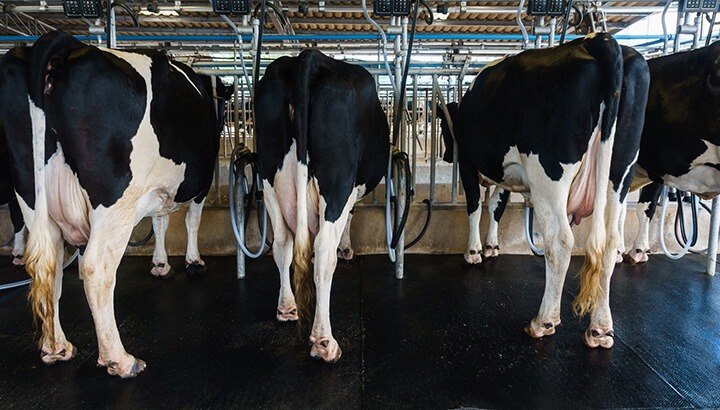There’s a dairy farm called “Bobolink” in northern New Jersey that makes some seriously good cheese. We had an opportunity to visit Bobolink recently to hear their remarkable story, take a guided tour of their facility, and meet some of their cows.
At Bobolink, the cows are healthy, well-loved animals that are pasture-raised, which means that they eat grass, clover, and whatever other plants they want on the farm. These cows are well cared for and far healthier than their industrial agriculture counterparts. They don’t get antibiotics or hormones like the cows that are producing milk in confined quarters on large-scale factory farms. And they look different too…skinny by comparison.
As I discussed the cheesemaking process with the Bobolink farmers, I learned that they regularly get visits from the humane society because visitors to the farm call with concerns that the cows look too skinny because they can see their ribs and hip bones. But these folks are completely off base.
The cows at Bobolink look the way cows are supposed to look.
You might say, their point of reference is skewed. People are so used to seeing images of fat cows from feedlots that they think that all cows are supposed to look like that. Sadly, the same thing is happening to us.
A New Normal
In clinical practice, especially in patients with serious illness, I often find myself discussing the idea of getting comfortable with a “new normal.” After a big surgery, a long hospitalization, or even a treatment with a powerful medication, the idea of getting acquainted with a new normal is often a necessary part of the healing process.
But this article is about another sort of new normal…and it’s one that we ought not be so comfortable getting used to. I’ve been stunned by the number of overweight and obese young people I see everywhere I go. And many of them seem perfectly content to “let it all hang out” because they are largely untroubled by their size.
Don’t get me wrong: it’s a wonderful thing when a young person has a positive body image and refuses to let their appearance define their self-esteem. The fact that over 70 percent of America is now overweight or obese might make it normal…but it doesn’t make it right.
A Growing Problem
No one should be made to feel ashamed for being overweight. But no one should fool themselves into thinking that being obese is normal or healthy either. If you are overweight, then you are dramatically increasing your risk for a number of chronic diseases, including heart disease, diabetes and cancer. That’s why recent statistics like the following are so troubling:
- 34 percent of today’s teens now qualify as obese
- Obesity rates have jumped 12 percent in the last two decades
- Obesity rates among young people have tripled since the 1970s
- Obesity rates are even more alarmingly high among Hispanic and African American teens
Cutbacks in physical education and recreational activities are important factors fueling this trend. And so is the increasing amount of time that students spend using computers and personal devices. But the biggest culprit is poor dietary choices, particularly the high amount of calories, sugars, and adds fats/oils that are found in processed food, fast foods, carbonated beverages, and the rest of the indulgences in the Standard American Diet (SAD) that today’s young people consume.
These days, so many people are obese that being overweight has become the rule rather than the exception. We see ourselves in the same way that people see the cows on the farm.
The Data Doesn’t Lie
A new study published in the JAMA Pediatrics highlights this issue. As the authors note, “More adolescents with overweight or obesity seem satisfied with their weight and not ready or motivated to engage in weight loss efforts. Failure among pediatricians to discuss weight issues with adolescents may also contribute” to this trend.
In the past, 80 percent of teen girls thought they weighed too much and were trying to lose weight. Today, that figure has slipped to 54 percent. There’s been a similar downward trend for males too. Previously, 36 percent of teenage boys said they were trying to lose weight, but that figure has now slipped to just 23 percent.
It’s a good thing that more young people are body positive. However, for their own benefit, they should be aware that being obese or overweight is not good for their health. Here’s some good news: better diet and physical activity can help teens maintain a healthy weight. Here are some quick tips for shedding excess weight and keeping it off:
- Substitute plant-based foods (fruits, veggies, and whole grains) instead of animal proteins.
- Get at least 30 minutes of physical activity every day.
- Limit consumption of sugary snacks, processed foods, and animal fats.
It’s a shame when obesity undermines a person’s self-esteem. But it’s important to recognize that carrying excess weight is a major risk factor for chronic diseases like heart disease, diabetes, and cancer. That’s why I’d like write a prescription that’s something of an antidote to the new normal: Eat right, move more, and don’t settle for the status quo.
Take good care,
Dr. Josh









